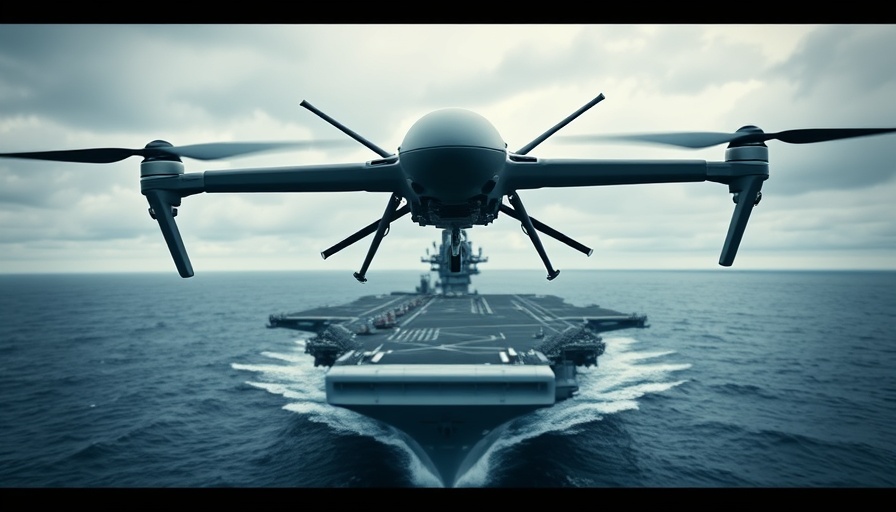
Revolutionizing Aerial Surveillance: The MQ-9B with Saab's Expertise
General Atomics recently made headlines by partnering with Saab to enhance the MQ-9B drone, specifically focusing on its Airborne Early Warning (AEW) mission package. This innovative collaboration signals a significant step forward in aerial surveillance capabilities, combining General Atomics' drone technology with Saab's extensive expertise in radar systems and military applications.
A Glimpse into the Future of Military Drones
The MQ-9B SkyGuardian, known for its versatility and endurance, can now incorporate advanced radar technology, fundamentally changing how military operations are conducted. It's designed to operate in complex environments, gathering critical intelligence while ensuring safer operations for ground troops. The inclusion of Saab's systems aims to augment the drone’s existing functionalities, allowing it to detect and track more targets than ever before.
The Power of Partnership: Insights from Aviation Analysts
A partnership like this between General Atomics and Saab is expected to set new industry standards. Aviation analysts believe that the combination of Saab's high-performance sensors and General Atomics' drone platform will create a formidable force in surveillance technology. This will not only ensure greater security for military operations but also enable real-time data collection and analysis, which are vital for decision-making on the battlefield.
Broader Implications for Technology and Employment in the Defense Sector
The implications of this partnership extend beyond just improved military technology. As projects like the MQ-9B AEW mission package evolve, they have the potential to create jobs and stimulate technological advancement within the defense sector. Local economies may benefit from increased demand for skilled workers in areas like engineering and manufacturing. The push for innovation might also inspire educational institutions to enhance their curricula to better prepare students for careers in military technology.
Inspiring Change: The Role of Drones in Modern Warfare
Drones are reshaping the way modern warfare is conducted. By integrating advanced technologies, the MQ-9B is positioned to provide unmatched situational awareness, which is crucial in today’s fast-paced military landscape. This not only improves operational effectiveness but also highlights a growing trend towards remote warfare, where soldiers can operate sophisticated technology miles away from the front lines, reducing risks to human lives.
What Lies Ahead: Predictions for Aerial Technology Growth
Looking forward, the growth of drone technology promises to redefine defense strategies across the globe. Experts predict that advancements in artificial intelligence and machine learning will further enhance the capabilities of drones, allowing them to make autonomous decisions in critical situations. This evolution could lead to entirely new roles in the military, driven by the need for operators who can manage and maintain these complex systems.
The Emotional and Human Impact of Military Drones
As military technologies evolve, it’s essential to consider the human aspect of drone warfare. While drones can save lives by reducing the need for ground troops, they also raise ethical questions about surveillance and privacy. It’s crucial for society to engage in discussions about the implications of such advancements on civil liberties and interpersonal relationships.
Join the Conversation
As these technological shifts take place, it’s imperative for the public to stay informed and engaged. Understanding the dynamics of partnerships like that of General Atomics and Saab will help demystify the role of modern military technology in our lives. Whether you are a military enthusiast, a policy maker, or an everyday citizen, your voice matters in shaping how these technologies are implemented in society.
 Add Row
Add Row  Add
Add 




Write A Comment